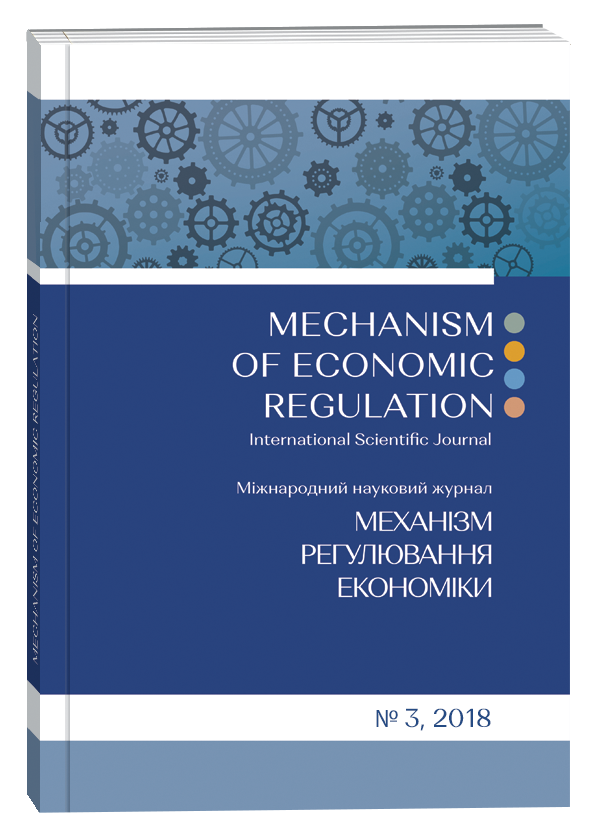A NEW TOURISM PRODUCT FORMATION: SYNERGETIC POSSIBILITIES OF BUSINESS ENVIRONMENT
Abstract
The business environment is a system that has its own structure and therefore, possesses synergy, i.e. the ability to self-organize. Self-organization is a unique happening in open systems that are studied by relatively new interdisciplinary science of Synergetics. The tools that it suggests are not widely used in Economics. Understanding of any economy as a system with some level of synergy is a core for the development of new policies, especially at regional levels while central government bodies provide nonefficient development decision-making. This work studies specific synergetic possibilities of the business environment that are relevant for the formation of new tourism products. The uniqueness of every touristic destination emphases the importance of regions as well as communities in its popularization. This study gives a detailed description of synergetic possibilities of business environment on a regional level that can be used for the development of brand-new tourism destinations. The importance of information flows is revealed. The organizational processes in the distribution of information are assumed as a leading principle of effective use of synergetic possibilities of a surrounding system while presenting new ecological products (particular events and destinations in general) in a tourism context. The conditions, in which the mentioned is possible, are also explored on the example of Kherson region in Ukraine and organization process of the specific festival in its southern part in 2017 – Tryhutty International Kite Festival. Kherson region and Ukraine at all have huge tourism potential that is still not realized. Thus, the development of new tools for brand-new tourism products formation is up-to-date. Approaches to using the synergy in tourism are proposed based on Ukrainian and Indian experiences.
References
Melnik, L. H. (2013). Ekonomika razvitiya [Development economics]. Sumy: Universitetskaya kniga, 784.
Pazenok, V. S., Fedorchenko, V. K., Kruchek, O. A., Dorova, T. A., Liubitseva, O. O. (2013). Turyzmolohiia: kontseptualni zasady teorii turyzmu [Tourismology: conceptual basis of the theory of tourism]. Kyiv: Akademiia, 368.
Matviichuk, Yu. (2013). Ekonomika rozvytku: shho ce oznachaje dlia Ukrainy? [Development economics: what does this mean for Ukraine?]. Visnyk Natsbanku Ukrainy: naukovo-praktychnyj zhurnal, 5(207), 36–39.
Pryimak, V. I., Hynda, S. M. (2016). Rol ta funkcii kapitalizacii u zabezpechenni rozvytku ekonomiky Ukrainy [The role and functions of capitalization in ensuring the development of the Ukrainian economy]. Regionalna ekonomika ta upravlinnia, 2(09), 35–39.
Novikova, N. O. (2015). Instytuty ta ih rol v rozvytku ekonomiky [Institutes and their role in economic development]. Molodyj vchenyj, 10(25), 59–63.
Melnyk, L. H., Sotnyk, I. M., Chyhryn, O. Yu. (2010). Ekonomika pryrodnyh resursiv: navch. posib. [Economics of natural resources]. Sumy: Universytetska knyha, 348.
Melnyk, L. H. (2006). Ekolohichna ekonomika [Ecological economy]. Sumy: Universytetska knyha, 367.
Melnyk, L. H., Karintseva, O. (2005). Osnovy stiikoho rozvytku: Praktykum [Basics of Sustainable Development: Practicum]. Sumy: Universytetska knyha, 352.
Ivaschenko, M. V. (2012). Ekonomichna povedinka yak chynnyk instytucionalnyh peretvoren: monografiya [Economic behavior as a factor of institutional transformation: monograph]. Kyiv, UBS NBU, 211.
Smoliy, V., Fedorchenko, V., Tsybuh, V. (2006). Encyklopedychnyj slovnyk-dovidnyk z turyzmu [Encyclopedic Dictionary in Tourism]. Kyiv, Vyd. dim “Slovo”.
Haken, G. (1989). Sinergetika [Synergetics]. Moskva: Mir, 419.
Bevzenko, L. D. (2002). Sotsial’naya samoorganizatsiya [Social self-organization]. Kyiv: Institut sotsiologii NAN Ukrainy, 437.
Sharko, M. V., Obolentseva, E. A. (2008). Primenenie sinergeticheskikh predstavleniy k prognozirovaniyu rezul’tatov innovatsionnoy deyatel’nosti [Application of synergistic views to forecasting the results of innovation activities]. Rуnkova ekonomіka: suchasna teorіya і praktika upravlіnnya, 11(19), 155–162.
Sharko, M. V., Koposov, G. A. (2008). Ispol’zovanie sinergeticheskogo effekta pri formirovanii strategii razvitiya proizvodstva [Use of synergetic effect in the formation of the strategy of production development]. Proceedings of the Suchasnі tekhnologії menedzhmentu: problemi teorії ta praktiki (October 23–24). Kharkіv: Kharkіvs’kiy natsіonal’niy ekonomіchniy unіversitet, 19, 98–101.
Pidvalna, O. H., Koziar, N. O. (2013). Synerhiinyi efekt v menedzhmenti [Synergistic effect in management]. Efektyvna ekonomika (electronic journal), 3. Retrieved from http://www.economy.nayka.com.ua/?op=1&z=1865.
Chmut, A. V. (2010). Synerhichnyi efekt yak faktor pidvyshchennia konkurentospromozhnosti intehrovanykh pidpryiemstv [Synergetic effect as a factor in increasing the competitiveness of integrated enterprises]. Visnyk Kharkivskoho natsionalnoho tekhnichnoho universytetu silskoho hospodarstva. Seriia «Ekonomichni nauky», 97, 388.
Melnyk, L. H., Dehtiarova, I. (2010). Synerhetychna osnova marketynhovyh innovaciy [Synergistic basis of marketing innovations]. Marketynh i menedzhment innovaciy, 1, 67–77. Retrieved from http://mmi.fem.sumdu.edu.ua/sites/default/files/mmi2010_1_67_77.pdf.
Musaev, L. A. (2011). Otsenka sinergeticheskogo effekta ekonomicheskikh sistem [Evaluation of the synergistic effect of economic systems]. Vestnik YuRGTU (NPI) (electronic journal), 3, 132–136. Retrieved from http://vestnik- npi.info/upload/information_system_15/3/5/7/item_357/information_items_property_743.pdf.
Novikov, V. A., Vankovich, G. R., Suares, L. I. (2012). Metodika opredelenija rejtinga vnutrennego sinergizma kollektivnoj sistemy [Methodology for determining the rating of the internal synergy of a collective system]. Ekonomika i upravlenie (electronic journal), 2, 51–54. Retrieved from http://media.miu.by/files/store/items/eiup/30/eiu_30_2012_7.pdf.
Skitsko, V. I. (2015). Analiz ta modeliuvannia synerhichnoho efektu lohistychnykh system mikroekonomichnoho rivnia [Analysis and simulation of the synergistic effect of logistic systems of microeconomic level]. Problemy ekonomiky, 1, 242–248.
Knjazeva, E. N., Kurdjumov, S. P. (2007). Sinergetika: Nelinejnost vremeni i landshafty kojevoljucii [Synergetics: Nonlinearity of time and landscapes of coevolution]. Moskva.
Zayceva, O. I. (2014). Doslidzhennja ta identyfikacija vlastyvostej i zdibnostej pidpryjemstv do samoorganizacii' v konteksti transformacii' koncepcij upravlinnja [Investigation and identification of the properties and abilities of enterprises to self-organization in the context of transformation of management concepts]. Visnyk Hmel'nyc'kogo nacional'nogo universytetu, 3, 100–103.
Shevtsova, H. Z. (2012). Synerhetychnyi menedzhment yak kontseptsiia orhanizovanoi synerhii v upravlinni pidpryiemstvamy [Synergetic management as a concept of organized synergy in the management of enterprises]. Ekonomika promyslovosti (electronic journal), 1–2, 202–214. Retrieved from http://dspace.nbuv.gov.ua/handle/123456789/41438.
Hodakivskijy, Ye., Kaminska, V., Mosiyenko, O. (2011). Synerhetychni pidhody do formuvannia intehratsiynyh struktur [Synergetic approaches to the formation of integration structures]. Ekonomika APK (electronic journal), 1, 121–126. Retrieved from http://eapk.org.ua/sites/default/files/eapk/2011/2011_01/11_01_21.pdf.
Prigozhin, I., Stengers, I. (1986). Poryadok iz khaosa: Novyy dialog cheloveka s prirodoy [Order Out of Chaos: Man’s New Dialogue with Nature]. Moskva: Progress, 431.


